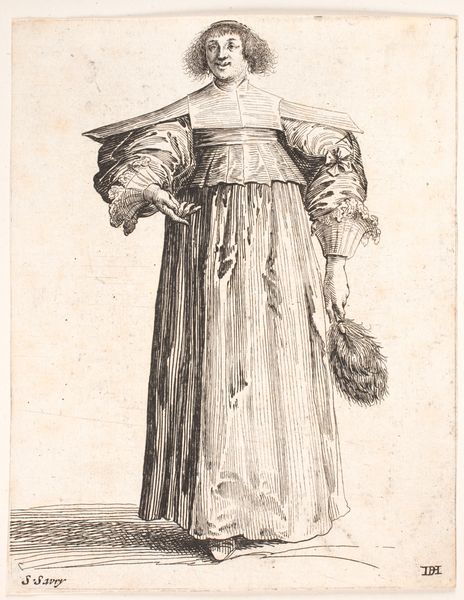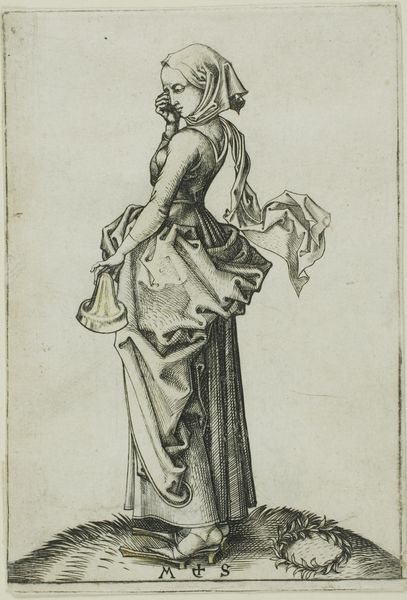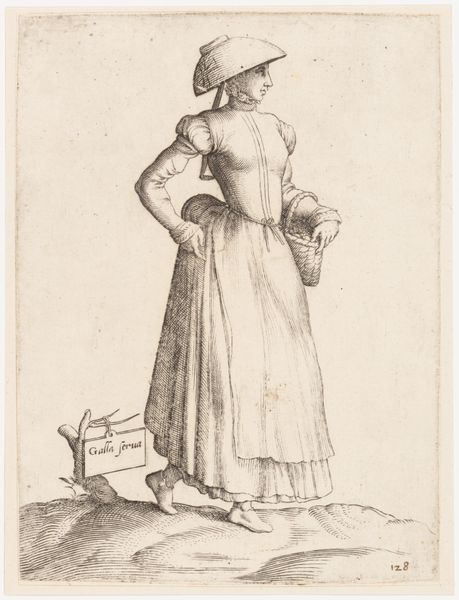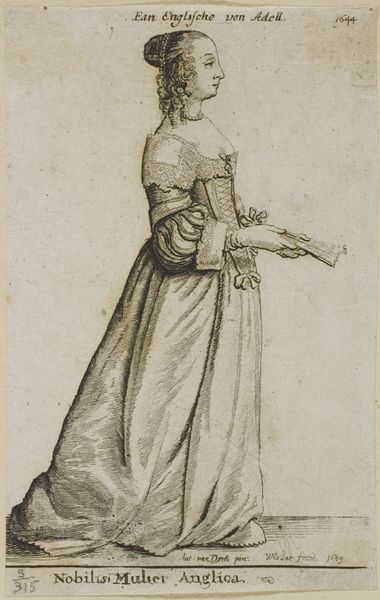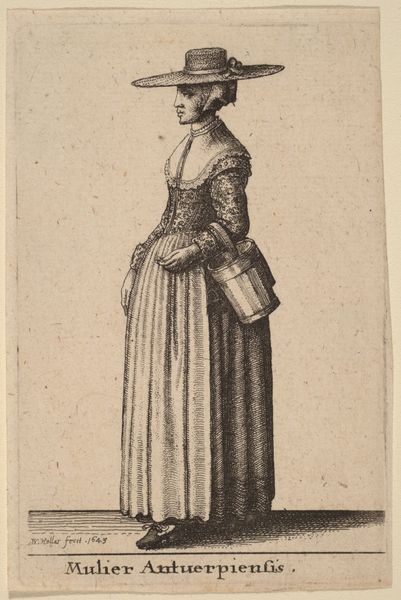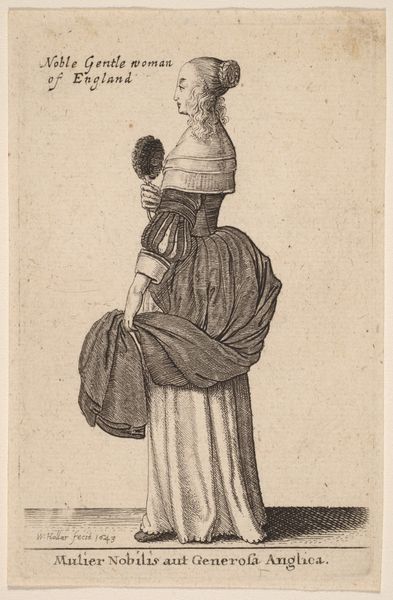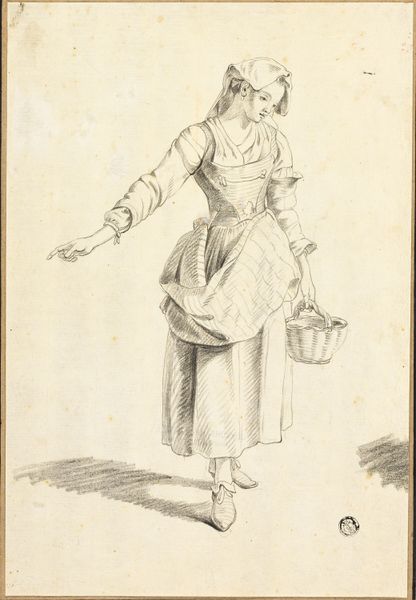
drawing, print, etching
#
portrait
#
drawing
#
allegory
#
baroque
# print
#
etching
#
figuration
Dimensions: Sheet (trimmed): 12 1/2 × 6 15/16 in. (31.7 × 17.6 cm)
Copyright: Public Domain
Curator: This is Jacques Bellange’s “Hortulana, from Hortulanae series,” created around 1611. It’s currently held in the Metropolitan Museum of Art. Editor: It has a very unsettling, dreamlike quality. The figure is gracefully posed, but everything she carries feels precarious and symbolic. What is that... a snake she is holding? Curator: The “Hortulanae” series depicts allegorical figures, often tied to abundance and the earth's bounty. The prints are striking examples of early Baroque art. The delicate etching lines give form to these figures, making them seem almost ephemeral. The use of line reflects a refinement sought by collectors during the early 17th century. Editor: Etching allows for a unique surface texture. Looking closely, one can see the varying depth and density of the lines that form this young woman's dress, especially in the gathered sleeves, adding to a visual richness and revealing much about garment construction and embellishment of that time. The fact that it’s printed gives this some insight on textile processes. Curator: Indeed. Consider the implications of making such imagery accessible via prints. This allows for dissemination of Bellange’s sophisticated compositions to a much broader, geographically diverse audience. That allows different societies to take on their interpretation. Editor: What intrigues me is how Bellange uses common garb to elevate these images. Her ornate boots are a great addition; they appear very specific to shoemaking from this period. Curator: Well, these kinds of series provided visual material that reflected elite sensibilities and allowed people to see themselves through a different light. There was much political significance linked with how this content made its way through communities in this medium. Editor: The woman appears in almost performative mode, in her presentation, almost like she is on stage, wearing what looks like theatre boots! The printing gives an element of spectacle to this artwork. The labor and artistry involved are a statement of this woman as a social artifact. Curator: Right! In terms of the public role of art at this moment, these images would’ve circulated among particular groups as reflections on the perceived social order. They were images to admire and maybe even to emulate. Editor: Thinking about her attire in detail, it highlights the value and skill involved in producing even seemingly simple objects, questioning that rigid boundary between 'art' and 'craft'. Curator: That’s certainly one way to consider it. Looking at "Hortulana" today invites us to reflect on how art shapes and reflects social values and individual representation. Editor: For me, it underscores the deep connection between material culture, creative labor, and social identity. I'll be curious about those boots.
Comments
No comments
Be the first to comment and join the conversation on the ultimate creative platform.

